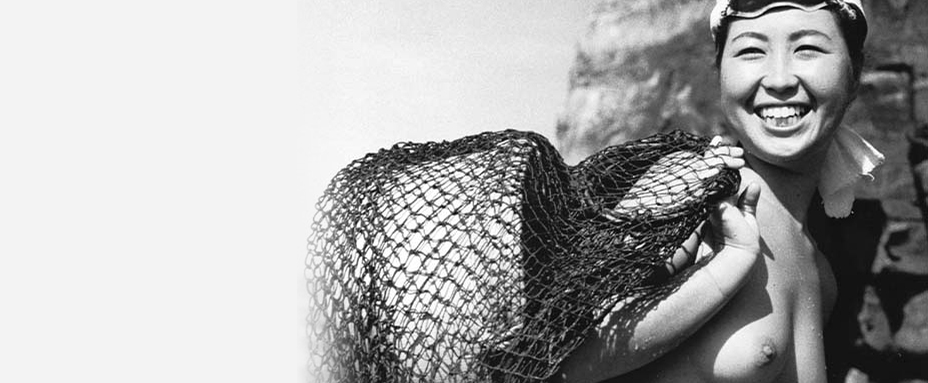
The story ? That of a Tokyo high school girl to a port devastated by the tsunami that her mother is an ama resume activity. The success of this series speaks to the affection of the Japanese to the sirens of the sea. The clusters are part of history, and even the DNA of Japanese. It is said that it plunged 2,000 years ago to collect sea urchins and shells and their names were already sung in older collections of Japan.
Yet the “women of the sea” are endangered.
I decided to make a clean heart and to meet the handful of still active clusters. These operate on the peninsula Kyii, south of Osaka (there are also some on the island of Cheju in Korea).
Here I am in Toba. Lung pearl culture in the 50s and harbor around which the masses have always plunged. We feel an atmosphere of doom. The coast was gradually torn concrete bars and the heart of this small town has stopped.
Yet it is here that the majority of Japanese mass plunge yet. Mikimoto Pearl Island on precisely. Which is now a museum.
There is an elegance and delicacy, to see them sink in water while dressed in bench … Unfortunately, these do work more than to entertain tourists. All praise the good salary made by the museum, others highlight the difficulties and the dangerous sea … They also point the finger at the consequences of overfishing that limits the quality of the booty recovered from the depths of the ocean.
This change is brutal. Upsetting for dozens of families that relied on the old fishing: so far, clusters have always managed to live through the sea “ It was 50 years ago when I started, the clusters could. largely live and went up the bucket load. This has changed . ” Better: in the mid 50s, with Kokichi Mikimoto who managed the feat to grow for the first time pearls, some of them have finally landed a steady job. Our famous CDI, a sesame at the time.
In 1951, at the opening of the demonstrations in the museum by the same Mikimoto, meanwhile become a world star of pearl, 6000 clusters dipped in the archipelago and twenty were the show. They are more than 2000 in 2004 and 1000 only 9 now working in the museum.
These clusters are yet the living heart of Japanese culture. Observe their slender legs sink into the sea, enjoy their grace and soak up the view they relate to overfishing and exploitation of resources are a rare moment. One of the last to live with these lively women of passion and superb craftsmanship.
This travel experience interests me!